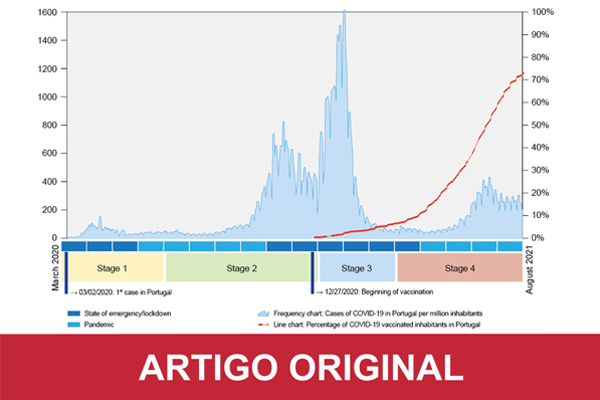SOCIAL MEDIA
Portuguese Medical Association's Scientific Journal

Introduction: The SARS-CoV-2 pandemic has reshaped the global landscape as we know it and had a tremendous effect on healthcare systems around the world. However, its impact on oral healthcare is still to be fully assessed. The aim of this study was to understand if and how COVID-19 affected the demand and performance of oral healthcare, taking the Clinical and Academic Centre of Coimbra as an example, more specifically, the Department of Stomatology of the Coimbra Hospital and University Centre and the Dentistry Department of the Faculty of Medicine of the University of Coimbra.
Material and Methods: An observational study was designed for collecting the data of a series of key oral healthcare indicators: number of appointments; referrals from primary healthcare; missed appointments; number of surgeries performed in the operating room; number of biopsies; number of patients admitted through the emergency department and epidemiologic parameters over two 18-month periods between September 2018 and August 2021: pre-COVID-19 and during the COVID-19 pandemic, with the latter divided in four stages. A statistical analysis which included descriptive and inferential procedures was then performed, with an established significance level of 5% and the application of parametric tests, t-Student test for a sample and for independent samples and One-Way ANOVA for the variance analysis.
Results: There was a general decline in all indicators comparing the pre-COVID-19 with the COVID-19 period, with a reduction of 50.61% in the number of appointments, 44.06% in referrals, 24.41% in surgeries, 26.30% in biopsies and 32.33% in patients seen in the Emergency Room. The number of missed appointments also increased by 181.82%. All variations revealed statistically significant differences (p < 0.05). The individual COVID-19 stage analysis, when compared with the pre-COVID-19 reference, and variance analysis of these different stages also showed statistically significant differences (p < 0.05 and p < 0.001), except for the number of biopsies during the third and fourth stages.
Conclusion: The results of this study suggest that the SARS-CoV-2 pandemic has had a considerable impact on oral healthcare demand and performance. However, results also show a remarkable adjustment and improvement in the provided care, with a positive evolution throughout the COVID-19 period.